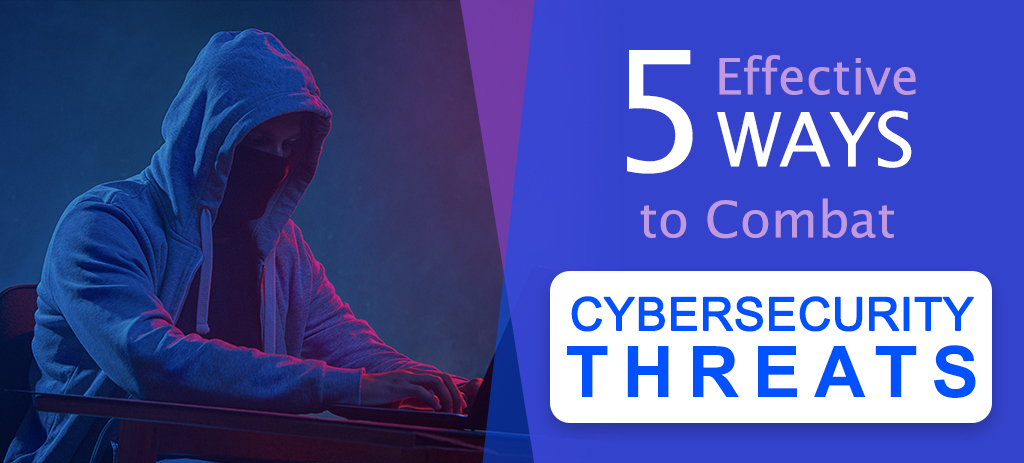According to the 2019 Internet Crime Report released by the FBI, the number of cybercrime complaints reached a whopping 467,361 that year. These complaints came from both individuals and corporate organizations. The total cost of these reported crimes was more than $3.5 billion.
Organizations need to use robust security measures to safeguard their critical business data and network from cybersecurity risks such as social engineering attacks, software flaws, insider threats, and more. Let's take a look at a few steps that businesses can take to improve their cybersecurity.
1. Important Tips to Mitigate Cybersecurity Risks
Perform Regular Vulnerability and Risk Assessments
Businesses can considerably reduce cybersecurity threats by conducting regular vulnerability and risk assessments through outsourced IT support. Managed Services Providers or MSPs have ample expertise at protecting an organization from cybersecurity threats while contributing towards its growth.
MSPs conduct a risk assessment by:
● Analyzing a business's IT infrastructure along with its hardware and software.
● Finding vulnerabilities such as missing data encryption and missing security configuration in the business's system by reviewing various services and applications such as servers, firewalls, internet connection, and remote monitoring system.
● Considering all the vulnerabilities they find in the business's system when forecasting their effect in case they were exploited by cyber-attackers. From the length of downtime and the amount of data loss, MSPs predict all the consequences.
● Facilitating appropriate control measures such as end-point encryption and proper system configuration to reduce/remove cybersecurity risks.
2. Implement a Strong Password Policy
Businesses should create a strong password policy to prevent their network from being compromised by cyber-attackers. Organizations need to consider the following aspects when creating a comprehensive password policy:
● The passwords need to belong and devoid of the username or any personal information of the employee. Further, the same password should not be used by employees for different accounts.
● Including the password history in the policy helps in setting a limit on how frequently an old password can be reused.
● The use of Multi-Factor Authentication (MFA) can help companies create an additional layer of security.
● Finally, businesses should familiarize their employees with the password policy. It will give employees a clear idea how to maintain a strong password and avoid getting their sensitive data compromised by cyber-attackers.
3. Incorporate Robust Network Protection Measures
Here's how organizations can improve their network security:
● Install Firewall
A firewall with intrusion detection prevents unauthorized access to a business's network by analyzing the incoming and outgoing traffic. It compares the data packets entering the network against predetermined rules and policies. The data packets can enter the internal network of a business only when it matches the established rules.
● Include Anti-Virus
Firms can prevent, identify, and remove malware from their network through anti-virus software. The software scans a business's network and protects it against several known malware.
● Include Security Information and Event Management (SIEM)
By analyzing log and event data in real-time through SIEM, businesses can protect their network from possible cybersecurity threats. SIEM gathers and combines the data generated through the company's IT infrastructure. It further analyzes this data against a defined set of guidelines and sends real-time alerts to the business in case of a probable security issue. For instance, with its real-time threat detection ability, SIEM can identify suspicious failed login attempts from an employee’s account. Accordingly, it can send instant alerts to the security team and protect the business from a potential brute-force attack.
● Facilitate Appropriate Access Control
Businesses can achieve advanced access control through role-based access control or RBAC.It restricts employee's data-access privileges based on their roles and responsibilities. Simply put, employees are allowed to access only that data which they require to perform their jobs.
Limiting access to critical data reduces the probability of data breaches that can happen through insider threats or unintended human mistakes.
MSPs also implement RBAC to enhance a business's compliance to local regulations by effectively managing how they access and use their data. For instance, when it comes to businesses in Winston, MSPs can ensure their adherence to state-specific compliance laws and hence, enhance Cybersecurity Kernersville based businesses.
● Include a Virtual Private Network (VPN)
A VPN works as an encrypted tunnel between a business’s network and the devices used by its employees. It Encrypts and secures the data passing through this tunnel, thereby protecting it from unauthorized access. It also encrypts the sending and receiving network destinations to increase overall security.
4. Provide Employee Training
A business's workforce can be its weakest link if not trained properly on identifying cyber-attacks. Businesses can make their employees competent in minimizing cybersecurity threats by training them to:
● Check email attachments and links before clicking them.
● Identify phishing scams by looking for unfamiliar sender names, spoofed domains, and insecure website connections.
● Avoid downloading any software or application on their computer without the permission of the IT department.
● Keep a track of their digital footprints and review the amount of Personal Identifiable Information (PII) they put online.
● Keep a check on malicious online activity and suspicious behavior of colleagues and inform the concerned authority immediately when required.
Further, businesses should regularly review and update their cybersecurity training modules to enable employees to combat the latest threats.
5. Apply Patches and Software Updates
To avoid becoming victims of cyber-attacks, businesses should regularly update their software. Software companies release regular product updates. The updated versions patch security gaps and protect the network from known risks. Patching fixes vulnerabilities and ensures the most current and updated protection from cyber threats.
Wrap Up
Businesses should understand their security vulnerabilities and implement multiple defense measures to maintain a robust and secure IT infrastructure. Using the above-mentioned strategies can help businesses safeguard themselves from ever-evolving cybersecurity threats.

